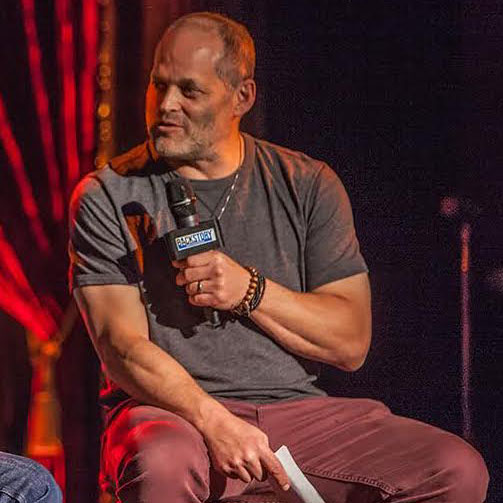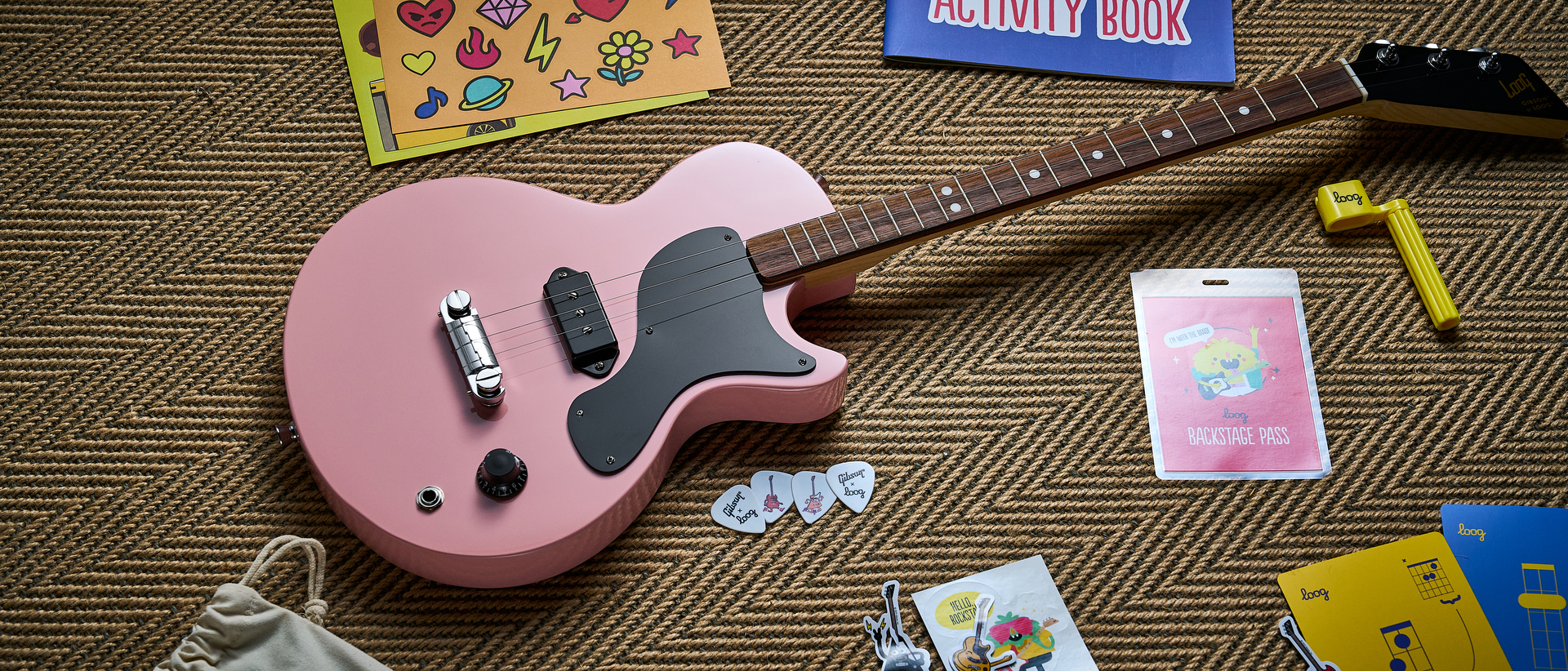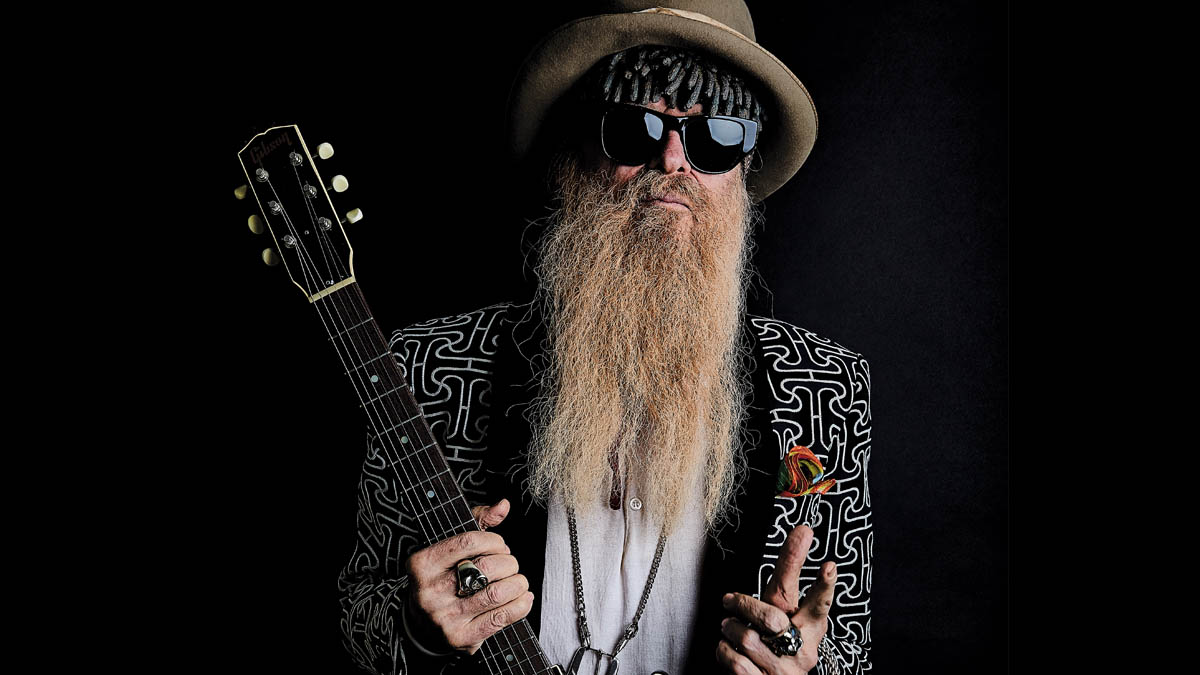
Editor's note: this interview was conducted and published in print prior to the passing of ZZ Top bassist Dusty Hill.
Last year Billy F. Gibbons found himself with a lot of time on his hands. Like most musicians, the sudden cancellation of touring hit the ZZ Top guitarist hard, so he was wide open to drummer Matt Sorum’s suggestion that they get together in a studio in the California High Desert near Joshua Tree National Park to kick around some ideas with guitarist Austin Hanks.
The three of them had also worked on Gibbons’ 2018 album, Big Bad Blues. “The sessions started with what we suspected would be a 30-minute have-a-look-around-the-studio, and we walked in and didn’t leave for three months,” Gibbons says. The result is Hardware, Gibbons’ third solo album in six years.
Unlike the previous two, which leaned heavily on blues and Latin music, this one is almost all original material that leans heavily toward greasy, grungy rock. “Holing up in the desert in the heat of the summer – that in itself was pretty intense,” Gibbons says. “We let off steam by letting it rock, which is what Hardware is really all about. It’s a raging rocker but always mindful of the desert’s implicit mystery.”
We caught up with the good Rev. Gibbons by Zoom.
Most of the album features you, Matt Sorum and Austin Hanks. How does your collaboration work? Is everything a group effort?
“Everyone is quite familiar with the backbeat from our fearless drummer, Matt Sorum. His history having played with the Cult, Guns N’ Roses, Velvet Revolver and on down the line speaks for itself. Matt combines with Austin Hanks, who a lot of people know as the unusual left-handed guitar player.
All the latest guitar news, interviews, lessons, reviews, deals and more, direct to your inbox!
“I’ve always enjoyed Austin’s guitar playing as well as his Alabama-based style of singing. When the three of us get together, it’s kind of a natural chemistry and occurrence. Which brings up another salient point: where’s the bottom end when it’s just two guitars and drums?
“Let’s shed some light on the rather interesting invention that makes this possible: A Little Thunder, the strange guitar pickup that identifies the low note of a guitar and throws it an octave lower and turns it into an accompanying bass guitar sound. When Austin and I are playing this device, it’s actually not a trio but a five-piece band. We had not one but two bass guitars to the mix, so it’s a powerhouse.”
Are you both playing that pickup on every track?
“Indeed we are. We also added some more traditional basslines when we found an old Fender Jazz – ’64 or ’65 – in the studio and everyone had a go. The unusual one was watching Matt step out from behind the drums and slamming down on a bass guitar. It was quite a surprise.“
So what guitar are you playing? I don’t imagine you put that pickup into Pearly Gates.
“No, that came later. When we first arrived at the studio we only had the gear that was existing in that studio. All the backups, the known suspects, were yet to arrive, but in the corner I picked up an old Fender Jazzmaster that was leaning up against a ’61 Fender Piggyback amp and a Fender Reverb tank, something I hadn’t had the pleasure of plugging into for seemingly forever.
”It was in fine working shape, and after the first few notes, the engineer said, 'Billy, it’s no secret that you became pals with Jimi Hendrix. Wasn’t it Jimi who said that you will never hear surf music again?' [A line from Hendrix’s Third Stone from the Sun.] I said, 'Well, yeah, but things have turned the corner.' There you have it. When you hear the first released track, West Coast Junkie, it’s definitely back to the '60s.”
You’ve said the High Desert setting of the studio (Escape, outside Pioneertown and Yucca Valley) had a profound impact on the sound of this album. Can you elaborate?
“We spent three months there, and that time really allowed us to immerse ourselves in the surroundings, which are fairly sparse. You really have nothing but desert rock, a lot of sand and cacti, maybe a few rattlesnakes thrown in. Then you add the mystery quotient, that strange energy that defies description in writing – and even photographs don’t do it real justice.
“When you’re there, something descends and it really has an effect. We found it to be quite handy to let it lead the pencil across the blank piece of paper, and every day we were finding the creative lid was being lifted and we took that as part of that desert surrounding.
“You’ll hear us take a stab at the description on the closing track. We wrapped up the sessions with a song called Desert High, which is our take on a spoken-word delivery, and we tried to tiptoe through it.”
Sounds like you wrote a lot of the material together during those three months.
“We certainly did. We found ourselves having just tiptoed in with actually no preparation or forethought before going in to see what we could see in the studio. That did lead to some interesting excursions into the writing process, and on certain days it was no surprise to have two or three songs emerge.”
We found ourselves having just tiptoed in with actually no preparation or forethought... That did lead to some interesting excursions into the writing process
Was Hardware a pandemic production, something that happened because you all had time on your hands?
“Yes. It started with an unexpected call from Matt, saying, 'Man, I’m out here in the Palm Springs desert and I’ve discovered this new studio out in Joshua Tree.' I had mistakenly tagged it as being a reference to a place I’ve worked with Queens of the Stone Age called Rancho De La Luna, which is David Catching’s joint.
“He said, 'No, it’s actually across the road. Would you like to go check it out?' and I said, 'Yeah, OK.' He didn’t mention that it was 20 miles across the road. [Laughs] It’s out in the middle of the desert, but it turned out to be a stunning establishment. Surrounded by nothing, you walk into the confines of a very sophisticated setup.”
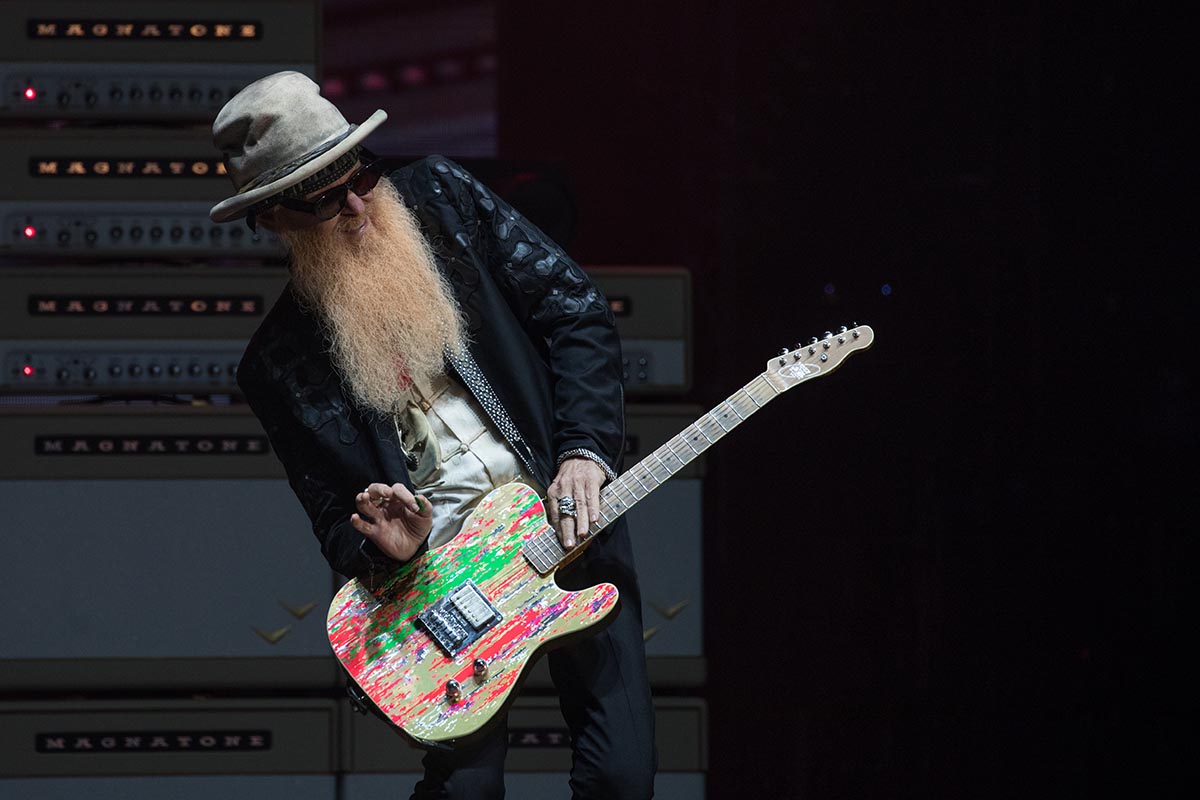
A lot of the album is aggressive, but a couple of the slow tunes really swagger. I’m thinking of Spanish Fly and Vagabond Man.
“Oh, yeah! Vagabond Man was kind of a step away from that hard-rocking thing that was leading the charge. It was recounting what it was like to be a traveling musician; everyone in the room, including the two engineers, had firsthand experience in not being able to stay in one spot more than one day at a time – and you really know what it’s like to be a true vagabond.
“We decided to try and put it into words, more on the lamenting of what you miss out on by not being a regular guy, by being a vagabond man. Even with a dollar or two in your pocket, it’s close to being homeless in some sense.
“When you speak of slowing things down, we can tiptoe over to Spanish Fly, which may be slower in tempo but has a ferociousness that’s a direct result of having spent a lot of time back in Texas, down there in Houston, when we were working in the midst of a lot of the hip-hop guys, like the Geto Boys, Bushwick Bill and Juvenile and Money Fresh from over in Baton Rouge. That was the Cash Money guys. On Hardware, you’ve got a handful of very disparate influences.”
You’re still sort of working in a trio format, but how is it different working with another guitar, and your unique approach to bass, versus the more traditional bass-drums-guitar lineup in ZZ Top?
“A good question. As you know, working a trio is a very spare outing, with everyone working 100 percent. When you remove the bass guitar, it became incumbent on Austin and me to figure out what the arrangements were going to do. As I drifted into a solo, Austin picked up the beat by really bearing down on his rhythm stylings and then, of course, I would give him the nod and do the same. It was a 50/50 exchange.”
Is that something you enjoy? You haven’t played a lot of rhythm behind another guitar player in your career.
“Oh, yeah! When Austin cuts loose it’s a delight to listen to him play. What’s antagonizing is trying to watch him play because he’s the upside-down and backwards guy – a lefty playing a flipped-over, right-handed guitar in the Jimi Hendrix and Albert King style with a weird tuning. But somehow he makes it work.”
It’s always intriguing when someone of his generation, like Austin or Eric Gales or Doyle Bramhall II, plays in that style, because they could’ve gotten a left-handed guitar, unlike Albert or Otis Rush.
“Indeed. I’ve often wondered about this and asked Austin, 'How in the world did you invent this thing?' and he said, 'It’s all I’ve known.' Like a lot of guys, there’s a guitar in the corner and no one there to tune it properly, so you just pick it up and start to play, which is exactly what Austin’s story is.”
Tell me how Larkin Poe came to be on this album.
“Oh, yes! ZZ Top had the pleasure of working on tour with a great blues guitar player named Tyler Bryant, and there were these two mysterious girls we kept seeing. [Bryant and his band, the Shakedown, have toured often with ZZ Top. Bryant is married to Larkin Poe’s Rebecca Lovell.]”
Larkin Poe are fierce! And very unique. After seeing them play, I knew that someday it would be of value to turn them loose and see what occurred
“Months and months of traveling and I finally braved the question, 'Who are these attractive girls who are following us around? I see them in the dressing room and the catering room.' And he said, 'Oh, they’ve got a band! And in fact, they volunteered to hit the stage and do a little warmup.' It was then and there on the touring road that I got to see Larkin Poe play, and brother, did they ever lift the lid on that end of things.
“They are fierce! And very unique. After seeing them play, I knew that someday it would be of value to turn them loose and see what occurred. With something so unexpected and new, which is a really big piece of this Hardware project, every day was a new song and we actually got to engage with a couple of other players along the way. Larkin Poe do it right and do it well.”
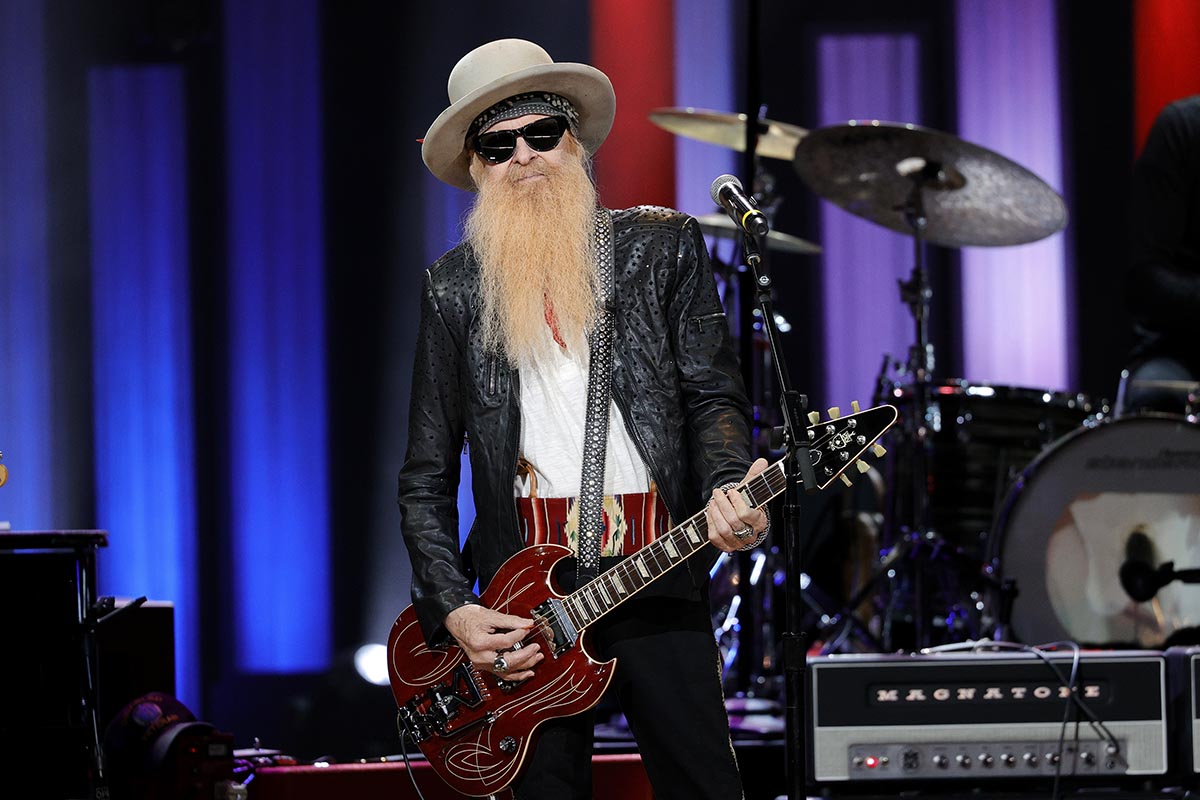
Do you foresee playing shows with Austin and Matt?
“Yes. We join the many who are ready to see the curtain rise and get back to live entertainment. We’re ready to hit the road. We had quite a successful run billed as the BFGs, and we had a blast out on the road, especially using that crazy pickup that transformed our guitars into bass and guitar all at once.”
Do you run a split signal out of the guitar?
“Yes, one going to a guitar amp and another going to your bass amp. But when we were recording the album, we stacked a backline with Magnatone amplifiers, so we took both the guitars and the basslines into that, and it worked beautifully.
“I met the [A Little Thunder pickups] inventor, Andy Alt, when he was operating under the same roof as James Trussart, who told me I had to check out this pickup. Of course, having worked with Seymour Duncan for so many years and lately Thomas Nilsen at Cream T pickups, I thought, 'Oh nice, another pickup.' And James said, 'No, this one is really different.' And he was right!
“It’s intuitive in that it’s able to identify the bottom three strings of the guitar and also you can assign the task of 'low note priority', which means the pickup has the ability to identify the lowest note and throw it down an octave – or two octaves! It’s a very sophisticated piece of gear. It works as a regular guitar pickup, and then when you engage the octave-lower segment, it throws that in.”
Does the fact that you’re essentially playing bass make you play differently? For instance, did you find yourself leaning more heavily on the low notes when playing rhythm behind Austin?
“No. What I liked about the effect of this pickup is it doesn’t require re-learning or any kind of new technique. It’s just picking up what you’re already playing, although you can develop some interesting techniques.
“You can add this effect in a differential manner, but when we were out on the road, Austin and I were just going about things as we normally would. It was quite mystifying to those attending the event. They were hearing a bass guitar and going, 'Where is the bass player? Is he behind a curtain somewhere?'”
You still haven’t told me what guitar you use with this pickup!
“Ah! John Bolin to the rescue. As a lot of people know, I’ve had the pleasure of working directly with Bolin Guitars out of Boise, Idaho, for the last four decades; he called me and said he got word I was using A Little Thunder and that he had a couple of guitars he thought would be perfect.
“He had a right-handed version and a left-handed version for Austin, so we slapped the Little Thunder pickups into these guitars – and off we went. It proved to be an excellent combination.”
Tell me about the Jungle Show, your occasional band with Jimmie Vaughan.
“Shortly after B.B. King passed away there was a tribute organized in Austin, and I was invited to contribute a few sentences of a verbal tribute about what B.B. has come to mean to so many. Then the organizer invited me to join in and play a B.B. King song, joining a grand lineup that included the B.B. King band with Bonnie Raitt, Rodney Crowell, Kris Kristoffersen and others.
“When I started looking at songs I was really familiar with, they had all been laid claim to! I went and talked to the great Hammond organist Mike Flanigin over lunch and told him we should find something from left field, and he had the perfect suggestion: The Jungle, a song he knew well because the CD had been stuck in his car player for a year!
“That was the number we laid on them during that tribute. Flanigin said, 'All of us are off the road, so why don’t we throw a little get-together and do a few nights?' And I said, 'Not a bad idea.' He said, 'Jimmie Vaughan wants to join in. Chris Layton, the great drummer, wants to beat the skins, and Sue Foley’s got some blues licks up her sleeves. So yeah! Let’s do this.'
“Then we have to pivot to what are we going to call this and he said, 'Let’s call it the Jungle Show since it’s the first song on the setlist.' That was six years ago. We’ve played an annual New Year’s show at Antone’s ever since. This past year, the restrictions were well in place so we decided to film the event, and it was released as a streaming broadcast.”
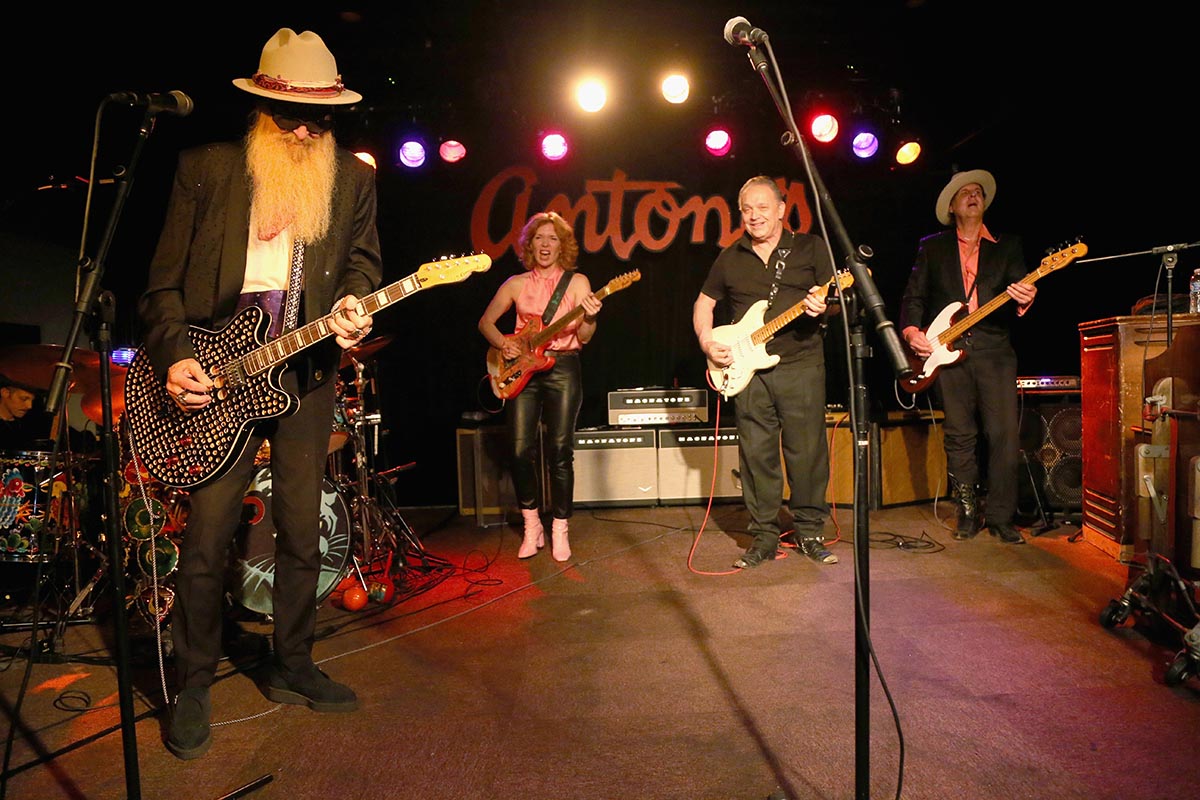
Stevie Ray Vaughan was well known as a guitar player in Austin, and guitarist Bill Campbell told him he had to start singing or else he’d be someone else’s guitar player forever. Did you have a moment of realization like that, or did you always see yourself singing and playing?
“I started when I got a guitar for Christmas and along with it came a tiny little Fender Champ. Shortly after that I was invited to join the neighbors, who had already put a little outfit together. We decided to call ourselves the Saints, though we were very unsaintly, I must say.
“When I joined I was guitar player number 3 and the other two guys had big amps. All I could do with my tiny Fender Champ is turn it up, and by the time I had it turned it up to 10 I was screaming to be heard, and that’s how I learned how to step up to the mic and start singing.
“Jimmie Vaughan tells a very similar story. Jimmie and Stevie started off as guitar players not intending to become frontmen or singers, but as you point out, Stevie got strict instructions from Mr. Campbell to open up and let it rip. Jimmie eventually did the same thing. Mr. Campbell was a guy who played with serious intent and should be remembered as one of the Texas greats as well.“
- Hardware is out now via Concord Records.
Alan Paul is the author of four books, including Brothers and Sisters: The Allman Brothers Band and the Inside Story of the Album That Defined '70s as well as Texas Flood: The Inside Story of Stevie Ray Vaughan and One Way Out: The Inside Story of the Allman Brothers Band – both of which were both New York Times bestsellers – and Big in China: My Unlikely Adventures Raising a Family, Playing the Blues and Becoming a Star in Beijing, a memoir about raising a family in Beijing and forming a Chinese blues band that toured the nation. He’s been associated with Guitar World for 30 years, serving as managing editor from 1991 to 1996. He plays in two bands: Big in China and Friends of the Brothers (with Guitar World’s Andy Aledort).







